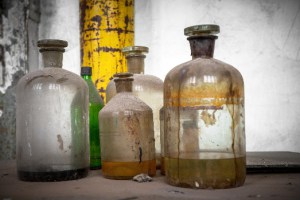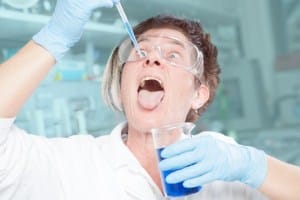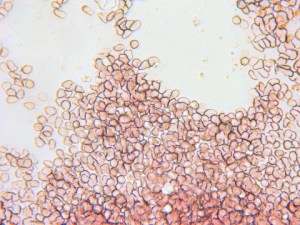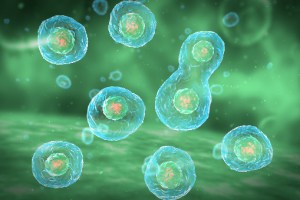Top 5 Reasons Cell Assays Fail
In the dynamic realm of biological research, cell assays are critical tools to unravel the mysteries residing at the cellular and molecular levels. These assays, pivotal in drug discovery, toxicology, and various other fields, are meticulously designed to gauge cellular responses under various conditions. However, the pathway to garnering precise and reliable results is often strewn with unforeseen hurdles. A slight deviation in protocol or a minuscule contamination can lead to an assay failure, rendering hours of labor and resources down the drain.
In this comprehensive guide, we delve into the top 5 reasons that lead to cell assay failures. By understanding these common pitfalls, researchers can arm themselves with the requisite knowledge to navigate around these issues, thereby bolstering the accuracy and reliability of their results. So, whether you’re a seasoned researcher or a novice in the field, understanding these factors can significantly ramp up the success rate of your cell assays.
Related: Protocol for Cell Migration Assay
#1 – Biological Contamination
Contamination arising from careless handling of equipment or cell culture plates.
Contamination can arise from chemical or biological means. To avoid contamination, the scientist should perform routine cleaning of all equipment, floors, and counters. When working with chemicals, it is good to make sure all lids are closed tightly before transporting a container. When working with cells, be sure to avoid cross contamination by working with one cell line at a time and changing pipette tips when appropriate.
Improper aseptic technique.
Proper aseptic technique includes cleaning all surfaces in the cell lab, including the outside of the cell culture hood. The hood should be sprayed down with 70% alcohol and only sterile materials should be placed into the hood. Gloves should be worn at all times and should always be sprayed with 70% alcohol upon entering the hood. All cell work should be performed in the cell hood to keep the cell environment as clean as possible.
#2 – Improper Storage Conditions

Plates, cells, reagents, and equipment not stored at recommended temperatures.
It is important to research the temperature and conditions in which all reagents and cell lines should be stored. Improper storage of reagents can cause their components to no longer have their desired effects, thus rendering the reagent not useful. Cell lines are all different, so knowing the right temperature and conditions at which to keep your cell lines growing is key for any experiment. It is also good practice to periodically check the conditions of all refrigerators, freezers, and incubators to ensure all systems are properly working to avoid compromising any experiments or reagents.
#3 – Pipetting Technique

Improper pipetting techniques; Poor execution of wash steps
When pipetting, for example during a wash step, it is important to not dispense the liquid in an over aggressive manner.
Vigorous pipetting will increase your chances of dislodging cells that were attached to the surface of the plate. If your cells are ripped from the plate and then washed away, you have now compromised your experiment. If you are performing a wash step, we find it helpful to not aim your pipette tip directly at the plate surface where the cells are attached. Instead, you may want to aim the tip towards the well wall to help reduce any forceful impact. If you must shoot your solution directly at the plate bottom, please remember to be gentle to your cells.
#4 – Poor Cell Health

Cell cultures that are not at the optimal passage range; Cell toxicity from incorrect drug concentration range; Poor growth from improper supplement concentration.
Part of the conditions for a cell line are media and supplemental additives. Cell lines require a unique mixture of media and additives to provide the proper nutrition for healthy cell growth. Be sure to research what combination is most suitable for the chosen cell line. When running an experiment using varying levels of drug concentrations, be sure to find the desired range in which to expose the cells. Incorrect pipetting or miscalculations can cause the concentration to be off from what is desired, thus changing the way cells behave in those conditions.
#5 – Poor Cell Adhesion

Wrong choice of cell type (using cells that need longer attachment periods)
To select the appropriate cell type, one should consider the purpose of the desired experiment to be performed. Does the experiment require cells to be grown at specific conditions? Does the experiment require species-specific cultures? What is the volume of cells required to conduct the experiment? Once these basic questions are answered, the experimenter can then explore options such as adherent vs. nonadherent cells, continuous or finite cell lines, the species of the derived cell line, etc.
Wrong choice of plate coating (i.e. tissue culture vs fibronectin vs. collagen)
Cell culture flasks and plates come in all shapes and sizes, so it can be confusing as to which type is best suitable for specific purposes. These vessels can also be treated/coated with a variety of substrates, effectively adding more options to a growing list. Once a cell line has been selected, the proper substrate coating should be used that is best compatible with the chosen cells. This will ensure proper cell growth/migration as well as producing the best results for experiments.
Related: Do surface coatings influence cell migration?
Conclusion
This elucidation of the top 5 stumbling blocks in cell assays uncovers intricate aspects that necessitate meticulous attention. From the nuances of pipetting to the critical selection of cell types and plates, each step holds paramount significance. As we navigated through these common pitfalls, the path to robust, reproducible results becomes clearer. By addressing these issues head-on and fostering a culture of precision and awareness, we pave the way for more successful cell assays, pushing the boundaries of what is achievable in cellular research.